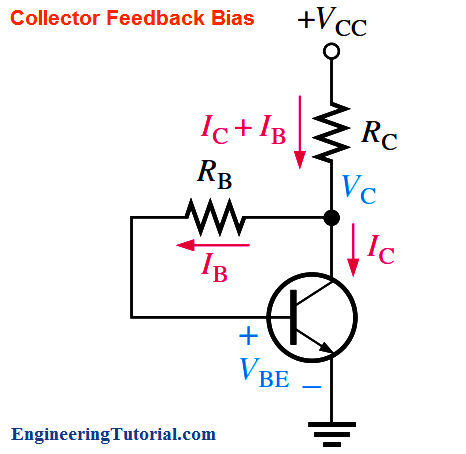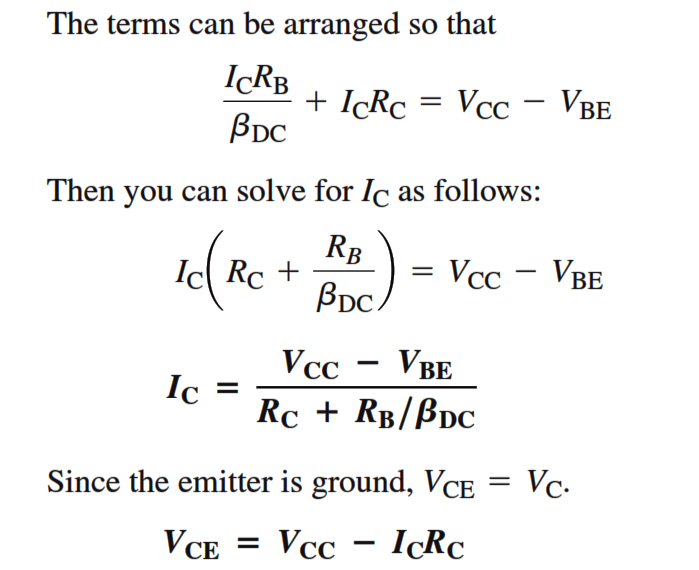
In Figure, the base resistor RB is connected to the collector rather than to VCC, as it was in the base bias arrangement discussed earlier. The collector voltage provides the bias for the base-emitter junction. The negative feedback creates an “offsetting” effect that tends to keep the Q-point stable. If IC tries to increase, it drops more voltage across RC, thereby causing VC to decrease. When VC decreases, there is a decrease in voltage across RB, which decreases IB. The decrease in IB produces less IC which, in turn, drops less voltage across RC and thus offsets the decrease in VC.
Analysis of a Collector-Feedback Bias Circuit
By Ohm’s law, the base current can be expressed as


Q-Point Stability Over Temperature
Above Equation shows that the collector current is dependent to some extent on βDC and VBE. This dependency, of course, can be minimized by making RC >> RB/βDC and VCC >> VBE. An important feature of collector-feedback bias is that it essentially eliminates the βDC and VBE dependency even if the stated conditions are met.
As you have learned, βDC varies directly with temperature, and VBE varies inversely with temperature. As the temperature goes up in a collector-feedback circuit, βDC goes up and VBE goes down. The increase in βDC acts to increase IC. The decrease in VBE acts to increase IB which, in turn also acts to increase IC. As IC tries to increase, the voltage drop across RC also tries to increase. This tends to reduce the collector voltage and therefore the voltage across RB, thus reducing IB and offsetting the attempted increase in IC and the attempted decrease in VC. The result is that the collector-feedback circuit maintains a relatively stable Q-point. The reverse action occurs when the temperature decreases.
Related Articles :
Engineering Tutorial Keywords:
- collector feedback bias
- disadvantages of collector feedback bias
- transistor negative feedback bias
